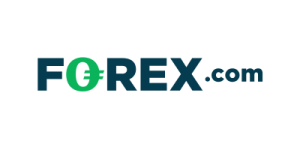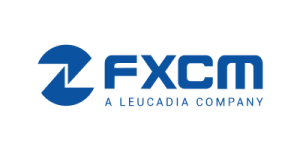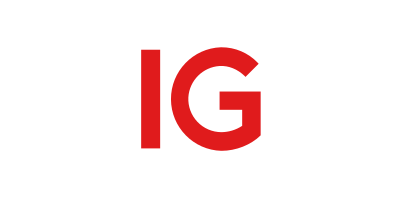Open and fund a Forex account is a fairly simple process and is done through the Internet. We must point out that the requirements and steps may vary from one broker to another, in this article we will only talk about the most common ones.
Before starting, it is advisable to remember that Forex trading carries high risks. For this reason, before opening a real account, we hope that you have acquired the necessary knowledge to negotiate in this market with a good trading strategy and also know how to properly manage your money. Also, we hope you have enough time to practice with a demo account to familiarize yourself with the chosen trading platform. If this is not the case, we highly recommend doing so.
Choose the broker
The first step is to choose a good, regulated, reliable broker that offers good trading conditions. Today there are a large number of online brokers on the market to invest in Forex. Each of them can offer various trading accounts, platforms and trading conditions.
To learn how to choose a broker please see our article ¨How to choose a Forex broker¨. You can also consult the an updated list of regulated Forex brokers.
Preliminary checks
Once you have selected the broker with which you are going to invest there are certain aspects that you will be asked to check before starting to open an account; these include being over 18 years of age and legally residing in the country from which the application is made. Also that the means of payment that you will use to make the initial deposit is one of those accepted by the chosen broker and has sufficient funds for it. Also make sure that you do not have limitations due to your country of residence, and that you have the documents that may be requested, some of them are mentioned later in this article.
Fill in the application form
Once you arrive here, you are ready to proceed to register on the broker’s official website. The beginning will be to fill in the registration form with your personal data. For this you must provide name, email, telephone number and country of residence. It is important that all the information you provide is real to match the documents that you will need to send later to validate your account.
Subsequently and after entering your basic data, in most cases you may have to choose other data such as type of account, currency in which it will be nominated, maximum leverage and trading platform.
In the case of trading account, it can vary between brokers and the most common are individual, joint or corporate. However the individual accounts could usually be divided into Micro, Mini and Standard. In recent times, many brokers no longer offer this separation in their trading accounts as they allow to operate with custom lots in all their accounts. Instead, there are brokers who classify their trading accounts according to the type of execution they offer, for example ECN, STP or MM. To learn more visit the article: Types of brokers.
On the other hand, most brokers will be required to ask you about your trading knowledge and experience. This is necessary to comply with certain regulations. Specifically at some point in this process you will be asked to enter a password, keep it in a safe place, it will be to log in later both in the user panel and in the trading platform. After complete the request, the username with the password will be sent to your email account. Brokers will probably advise you to change your password after the first login to the trading platform.
At the end of this form you should read the contracting conditions and other legal terms. If you are agree you can proceed to accept it. It is important in the case of email and mobile phone not to make mistakes, the broker will possibly use these means to verify and activate your account.
Verify your identity and address
After registering online, you will be asked to send some documents to verify your identity and residence address. You can do it through a section of the broker’s website or by sending it to an email provided for this purpose.
Proof of identity
For this test, a digital copy of an official document that proves your identity will be sent. You can use one issued by competent authorities such as passport, DNI (front and back) or driving license. Depending on the country there may be certain restrictions.
The document must be a scanned or photographed color copy of the original. It must also be current and show with total clarity and legibility your photograph, first and last names and date of birth. By the way, all these data have to agree with those provided previously in your request.
Proof of address
To prove the veracity of your address, they will ask you for a bill for services such as electricity, water, gas or telephone. This documents must be recent (usually no more than 3 months) and indicate the name and address of the current residence legibly. They will also have to match what appears in the registration application. Eventually, more than one document may be required as proof of your address. In some cases they may ask you for a statement from a bank account of yours, preferably the one you plan to use to add funds to your trading account.
The documents may be in PDF format of those received by you directly from the service provider companies or be images made on paper receipts. In some cases, screenshots will be accepted, always including the entire web page.
If you do not have these documents available when you are completing the opening form, do not worry, you can upload them later by entering to the customer area with the username and password that you entered when filling out the form.
Activate account
Once the broker has received the required documentation, if it is correct, you should receive an email with the instructions to complete the account activation. This occurs within 1 to 5 days (usually within 24 hours). The approval email will include instructions to transfer the initial funds to your account and to begin operating your account.
Deposit funds
To deposit funds you must log into your account using your access data to go to the section to manage funds. You can fund your trading account using various methods, such as credit cards and bank transfers.
Please note that cash, checks or deposits from a third party are generally not accepted, therefore the bank account will need to be under your name. If your bank account is in a different currency than the trading account, once the funds are received, they will be converted using the exchange rate at the time of the transaction.
Each online broker establishes a minimum initial deposit for the opening of each of the trading accounts offered. Ideally, you should check from the beginning to see if you have the minimum deposit required available and have no restrictions in your country. In some cases, they may even ask you for a color copy of your credit or debit card to verify the details.
Keep in mind that funds in all cases will be returned using the original method used, for example, if you deposited funds from a debit card, you will need to withdraw funds using the same card. Forex brokers will generally provide you with various deposit options to trading accounts. We will comment on the most common ones below:
Credit and debit cards
Deposits with a credit or debit card are the easiest, most efficient and safest way. Mainly those offered by MasterCard and Visa are accepted, although many include American Express, Maestro and others. Initial deposits made using this method typically reach your account within one business day. In subsequent deposits, once everything is verified, the funds can reach you in a few minutes.
Bank transfer and electronic transfer
The most used bank transfer methods are SWIFT and SEPA. Processing times for these methods vary widely and will depend on multiple factors. The arrival of your funds will be slower than with cards. These range from one to five business days.
Electronic payment methods
The most widely used electronic payment methods are Paypal, Skrill and Neteller. Others allowed but less used are WebMoney, Perfect Money, Sofort and GiroPay. Lately there are brokers that even allow deposits in Bitcoin, although they are really few. In general, they are fast payments just like the cards.
Check the trading platform
Once the initial deposit has been made, if you have not installed the selected trading platform yet, it is time to do so. You may find the download links in the welcome email sent to you. There are several platforms and each one can have versions, Windows, Mac, Android.
The installation file for your chosen platform will download in a few seconds. Then you must run the file and the installation assistance will appear, which will take care of almost everything automatically. The password to log in is the same as the one you have used since registration.
Conclusions – How to open and fund a Forex account?
So far the entire process of opening and financing a FOREX account, as you have seen, is designed to be done in a simple and fast way. It is an industry online that has developed a lot in recent years. As we said at the beginning of this article the steps may vary from one broker to another, here we have only tried to show you the fundamentals. After registration, you will be assigned an account manager. He will contact you by phone, e-mail or chat to introduce himself and offer help to operate or resolve any questions.
- What is FOREX?Do you want to know what Forex is? An approach to the subject with detailed and useful information on its operation and main characteristics.
- Types of brokersThere are several types of Forex brokers and learning about them can have a huge impact on your Forex trading experience.
- 10 Basic Forex Terms We Should Know.There are certain basic Forex terms that we must know before operating in the markets and thus have a greater chance of success.
- How to choose a Forex broker?In this article we will show you how to choose a Forex broker, but not just any one, but one that suits your needs.
- Regulation in the Forex marketRegulation in the Forex market is one of the main criteria that must be analyzed before choosing a broker.





